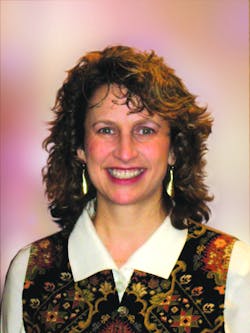
The continuous stream of technology news announcements sometimes rushes with certain themes like torrents brought on by spring melt. Lately, one of these themes has been biosensor development.
Mike May’s article, “The many approaches and applications of biosensing,” (see p. 25) digs into some interesting efforts in this realm, including work represented on this issue’s cover, as well as a compelling approach to the holy grail of noninvasive blood glucose being pursued at Texas A&M University. There, researchers are working on a device that reads glucose levels from the eye.
In pursuit of a similar outcome, scientists in Singapore have made an advance to surface-enhanced Raman spectroscopy (SERS) that boosts the sensitivity to the point of being able to work with concentrations found in patient samples (see p. 16). The approach seems transferable to other biological applications as well (in fact, the team is already working on an analogous system for sensing proteins); it is enabled by nanoscale patterning—and thus is just one of many examples of how manipulation at the nanoscale is making a difference for biomedical technology.
In another example of nanoscale engineering, you’ll find another story on biosensing in this issue involving experiments in nanofocusing of infrared light with tiny transmission lines (see p. 13). The idea for the approach came from the macro world, where transmission lines are specialized cables designed to carry, for example, radio frequency signals. A simple form consists of two metal wires running closely in parallel, also called ladder line. This structure has in the past been widely used for connecting the radio receiver or television set to the rooftop antenna. Applied at MHz frequencies, where typical wavelengths are in the range of centimeters to several meters, it is a prime example for transport of energy in waveguides of strongly subwavelength-scale diameter. I like the exclamation of surprise expressed by Martin Schnell, who performed the experiments: “It is amazing that the classical radiofrequency concepts still work at infrared frequencies. That is 30 THz!” he said.
As we prepare this issue for production, the rush of biosensor reports has also brought news of “the world’s first integrated optical biosensor for disease diagnosis.” The announcement comes from Biomagnetics Diagnostics Corp. (Orangevale, CA), which developed the waveguide-based bench-top type system in collaboration with Los Alamos National Laboratory, and now plans to proceed with work to adapt it for clinical trials and commercialize it. The company says it will initially pursue application for cholera, tuberculosis and malaria diagnosis (see http://bit.ly/kgx8AX).
For more on biosensors and other news developments, subscribe to BioOptics World’s newsletter (http://www.omeda.com/cgi-win/bow.cgi/NEWSLETTER) or follow us on Facebook (facebook.com/pages/BioOptics-World/131802223749), LinkedIn (join the BioOptics World group) and Twitter (BioOptics).
About the Author

Barbara Gefvert
Editor-in-Chief, BioOptics World (2008-2020)
Barbara G. Gefvert has been a science and technology editor and writer since 1987, and served as editor in chief on multiple publications, including Sensors magazine for nearly a decade.